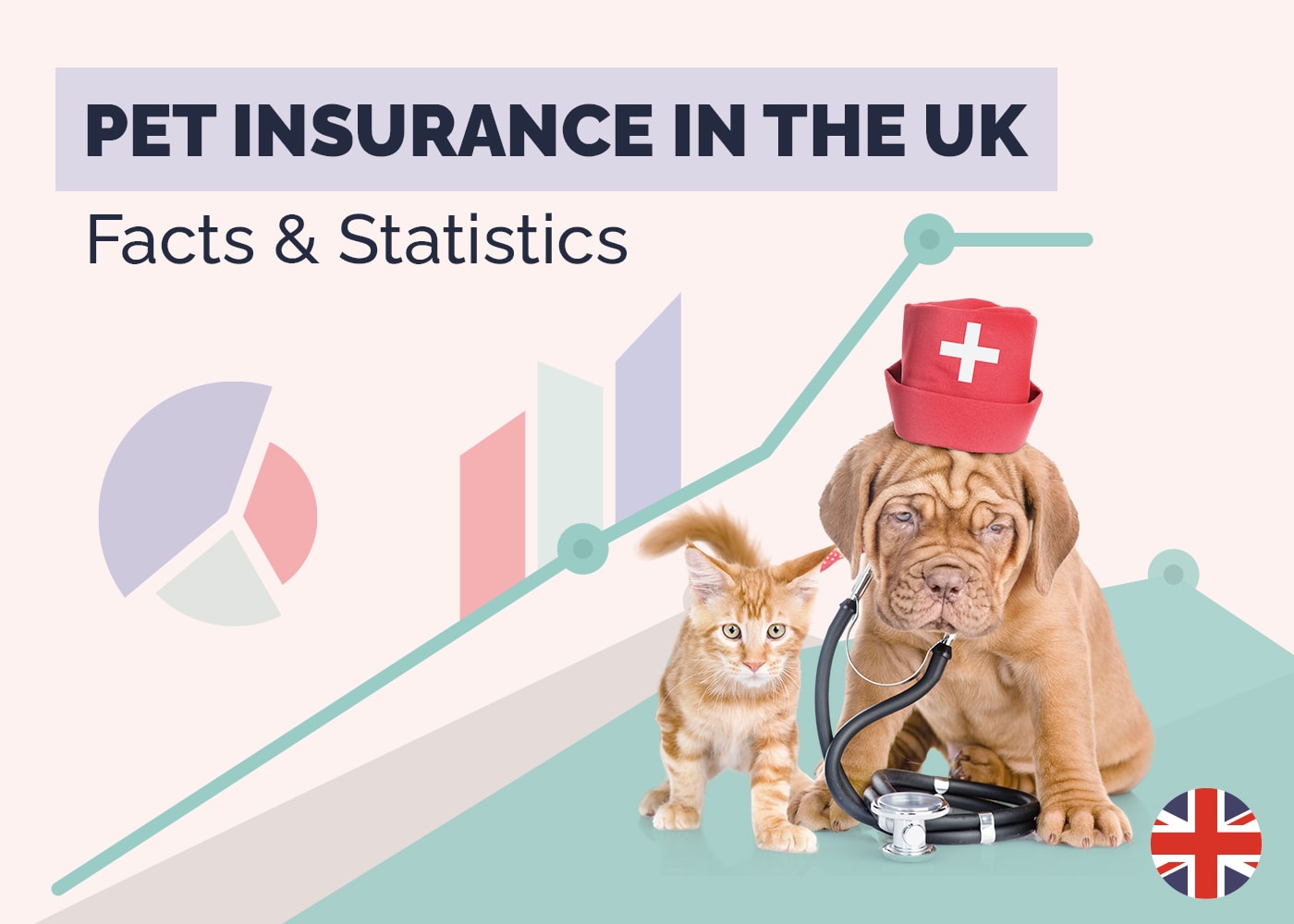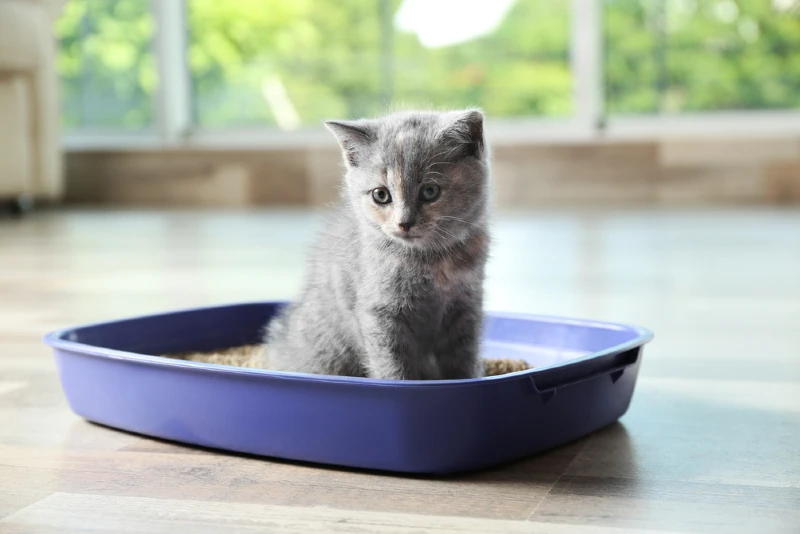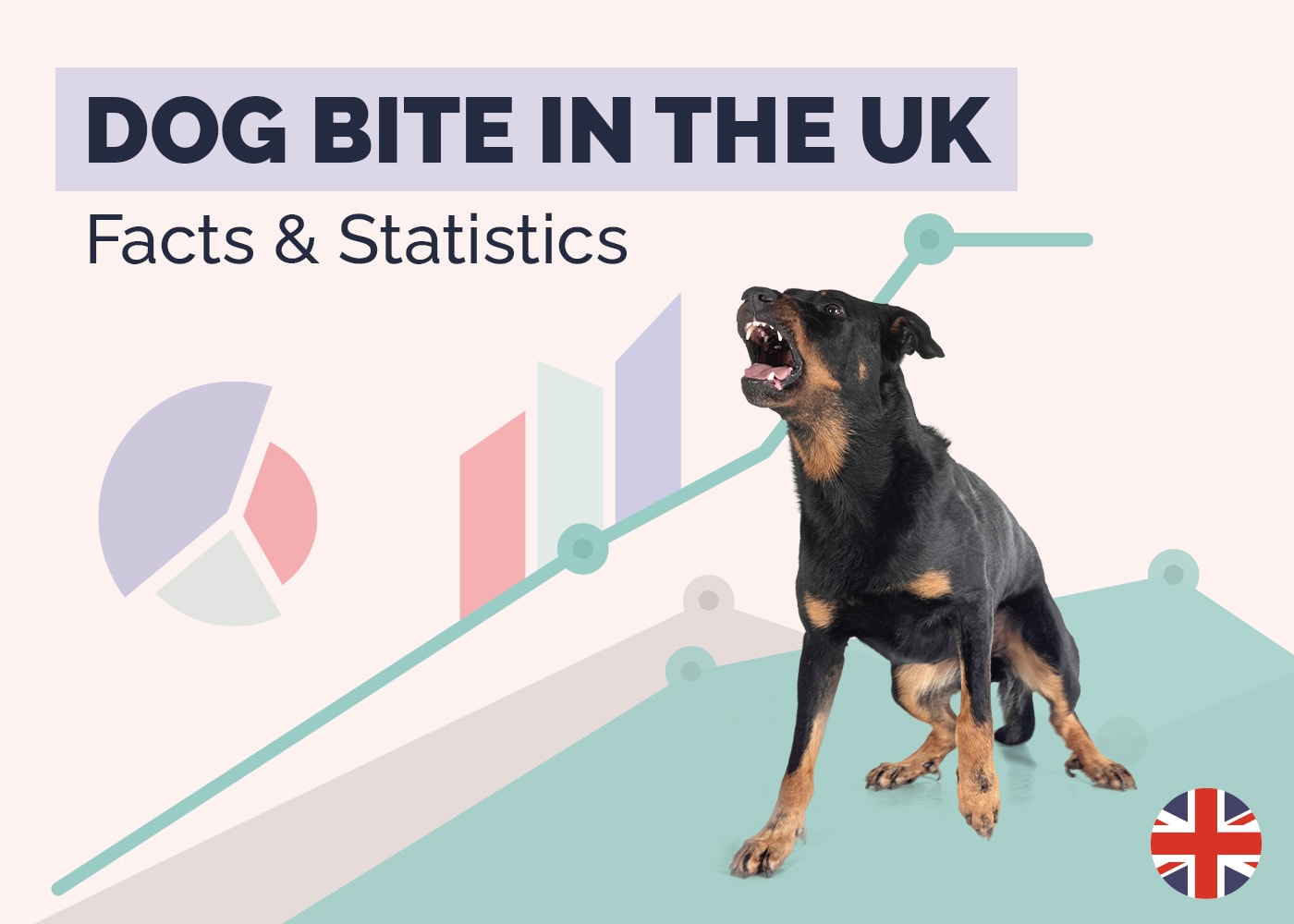18 Shocking UK Animal Homelessness Statistics & Facts (Updated in 2024)

Updated on
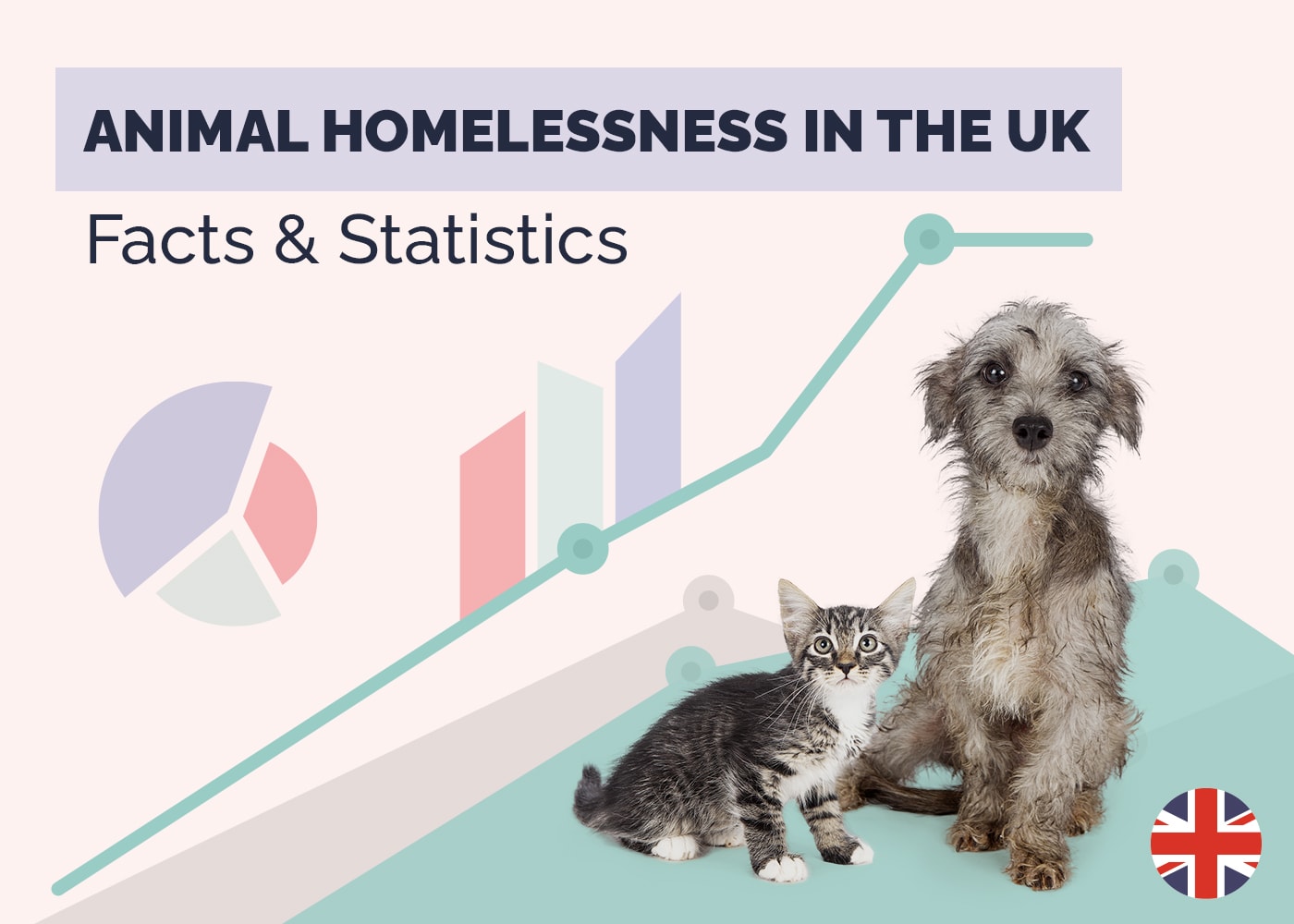
Click to Skip Ahead
Note: This article’s statistics come from third-party sources and do not represent the opinions of this website.
A homeless animal is one that doesn’t have a home to sleep or eat at, despite having a home in the past. It is different from a feral animal, which was born on the streets and continues to live there. Typically, however, strays, ferals, and homeless animals are reported together.
In the UK, animal homelessness is a massive problem that has only been exacerbated by the Covid pandemic and worsened by the current cost of living crisis. It is estimated that there are 1.1 million homeless animals in the country and that a quarter of a million cats and dogs find themselves in homeless shelters and rescue centres every 12 months.
Below are 18 statistics related to animal homelessness in the UK, including a look at some of the causes of the problem, as well as the shelters that deal with these animals on a daily basis.
Top 18 UK Animal Homelessness Statistics
- There are 13 million dogs, 12 million cats, and a million pet rabbits in the UK.
- More than 5 million pets were acquired during the Covid pandemic.
- A quarter of puppies acquired during lockdown were impulse buys.
- There are currently 1.1 million homeless animals in the UK.
- There are approximately 100,000 homeless dogs in the UK.
- There are more than 50 stray cats per square kilometre in some cities.
- A quarter of people believe stray dogs are dangerous.
- More than 40,000 dogs and cats are in shelters across the country.
- There are approximately 1,000 shelters and rescue centres in the UK.
- A quarter of a million animals are sent to rescue centres every year.
- 21 dogs a day are euthanised because of such high demand for shelters.
- There has been a 24% increase in animals left at shelters in 2022.
- Restrictive rental agreements are the biggest obstacle to adopting pets.
- More than a third of people would not adopt a pet from a shelter.
- A single female puppy and her offspring can produce 67,000 puppies in 6 years.
- A single female cat and her offspring can produce 370,000 kittens in 7 years.
- Nearly 50% more rabbits have been abandoned in 2022 than in 2021.
- 19% of pet owners are worried about the cost of feeding their pets.
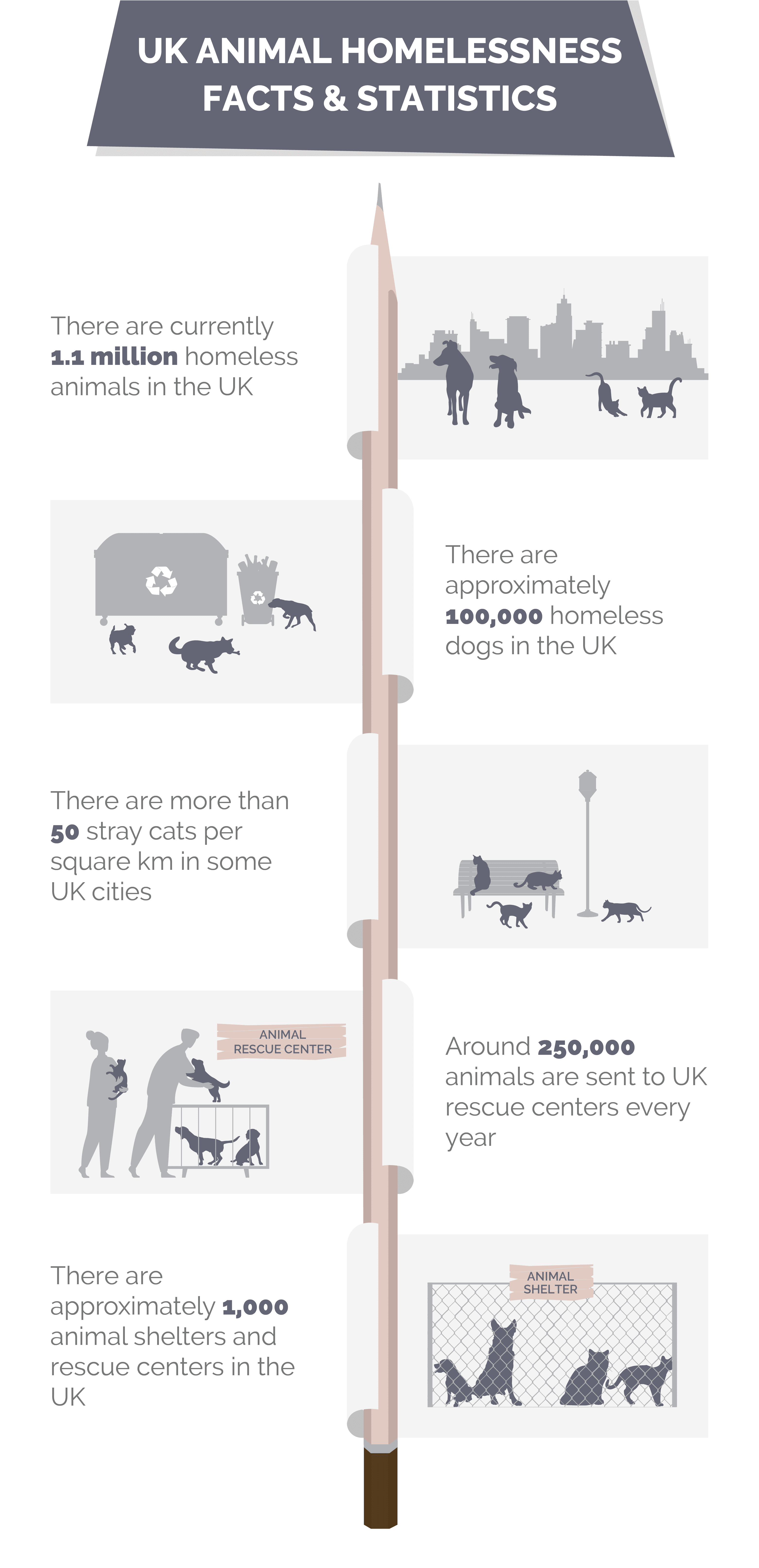
General Pet Statistics
1. There are 13 million dogs, 12 million cats, and a million pet rabbits in the UK.
(Statista)

On the whole, the UK is a nation filled with animal lovers. According to recent figures, there are a total of 13 million dogs and 12 million cats, as well as a million pet rabbits. A total of 3 million birds, including 1.6 million indoor birds and 1.4 million fowl, are also found across the UK, along with 600,000 each of hamsters and horses/ponies.
2. More than 5 million pets were acquired during the Covid pandemic.
(BVA)
The UK has always had a love affair with pets, but this was heightened during the pandemic when many people bought additional or first-time pets as a way to combat loneliness and for companionship. More than 5 million pets were acquired during the Covid pandemic.
3. A quarter of puppies acquired during lockdown were impulse buys.
(Passpawt)

More worryingly than the sheer number of pets adopted during lockdown is the fact that many of them were impulse buys. A quarter of new puppies during this time were taken as impulse buys, which means that owners did not do any research on the cost of keeping a dog or what was needed to care for them. It is more likely that an impulse buy puppy will be surrendered or given up than if the owner had done ample research.
Homeless Animals
4. There are currently 1.1 million homeless animals in the UK.
(Wales Online)
Although the majority of pets are lovingly owned and cared for in the UK, the country does have a huge problem with homeless animals. It is estimated that there are around 1.1 million homeless animals currently. The figure includes homeless animals, as well as strays and those in rescue centres and shelters.
5. There are approximately 100,000 homeless dogs in the UK.
(PETA)
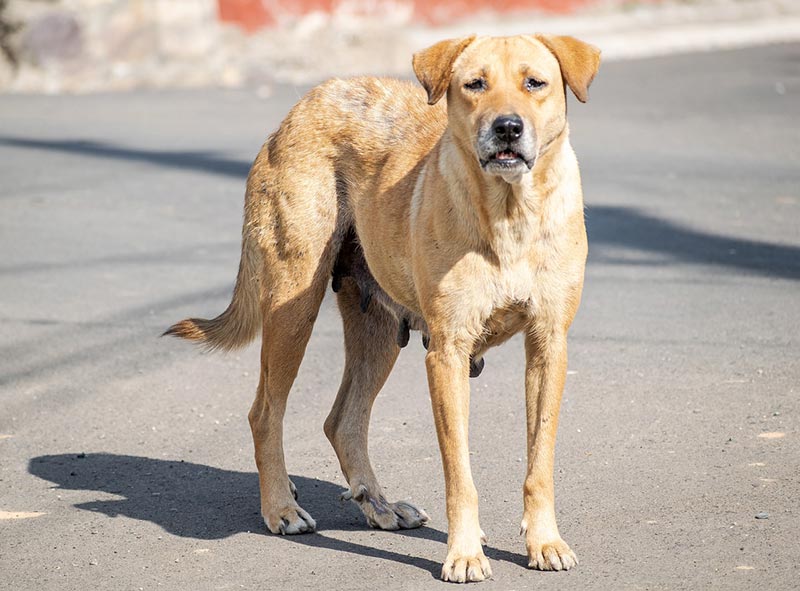
Of those 1.1 million animals, 100,000 are dogs, and, according to PETA, there is also a “countless” number of homeless cats. Cats are prolific breeders and many live feral, which means that their numbers can increase very quickly.
6. There are more than 50 stray cats per square kilometre in some cities.
(Passpawt)
Stray cats are especially a problem in cities and large towns. Stray cats are used to being around people, although they may not like being approached, but they also know that there is food and other items around houses and towns. In some large cities, the problem is such that there are believed to be as many as 50 stray cats per square kilometre.
7. A quarter of people believe stray dogs are dangerous.
(Pet Product Marketing)
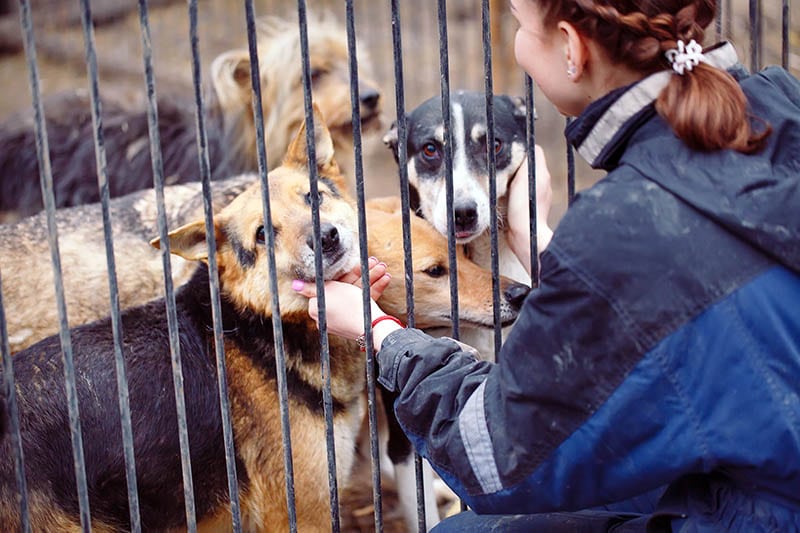
While stray cats are not usually considered a danger to people, a lot of individuals do believe that stray dogs are a danger to them. In one survey, approximately 25% of respondents said that they believe stray dogs are a danger.
Shelters and Rescues
8. More than 40,000 dogs and cats are in shelters across the country.
(Passpawt)
Shelters and rescue centres take in some stray animals, and they take on pets that their owners have to abandon. They care for the animals while trying to find them a new home and family. At any given time, there are believed to be 40,000 dogs and cats in these shelters, but because there is no registry, there is no way of knowing the exact number, which could be significantly higher.
9. There are approximately 1,000 shelters and rescue centres in the UK.
(UK Government)
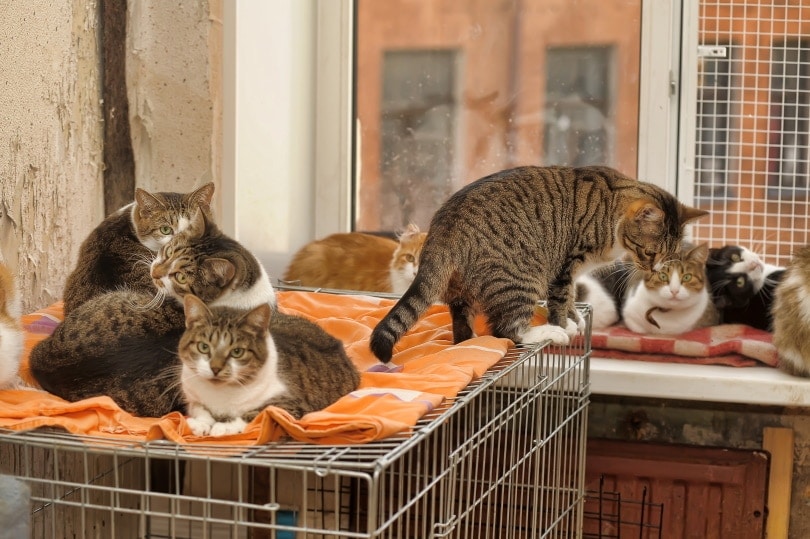
According to one debate in the UK parliament, there are estimated to be 1,000 shelters and rescue centres across the country. While some shelters only take certain types of animals, there are those that take everything from small mammals to horses.
10. A quarter of a million animals are sent to rescue centres every year.
(UK Government)
Shelters and rescue centres are typically run by volunteers and as charities, with many struggling for funding to stay open. Roughly 250,000 or more animals of all types find themselves in shelters every year in the UK.
11. 21 dogs a day are euthanised because of such high demand for shelters.
(Rested Paws)
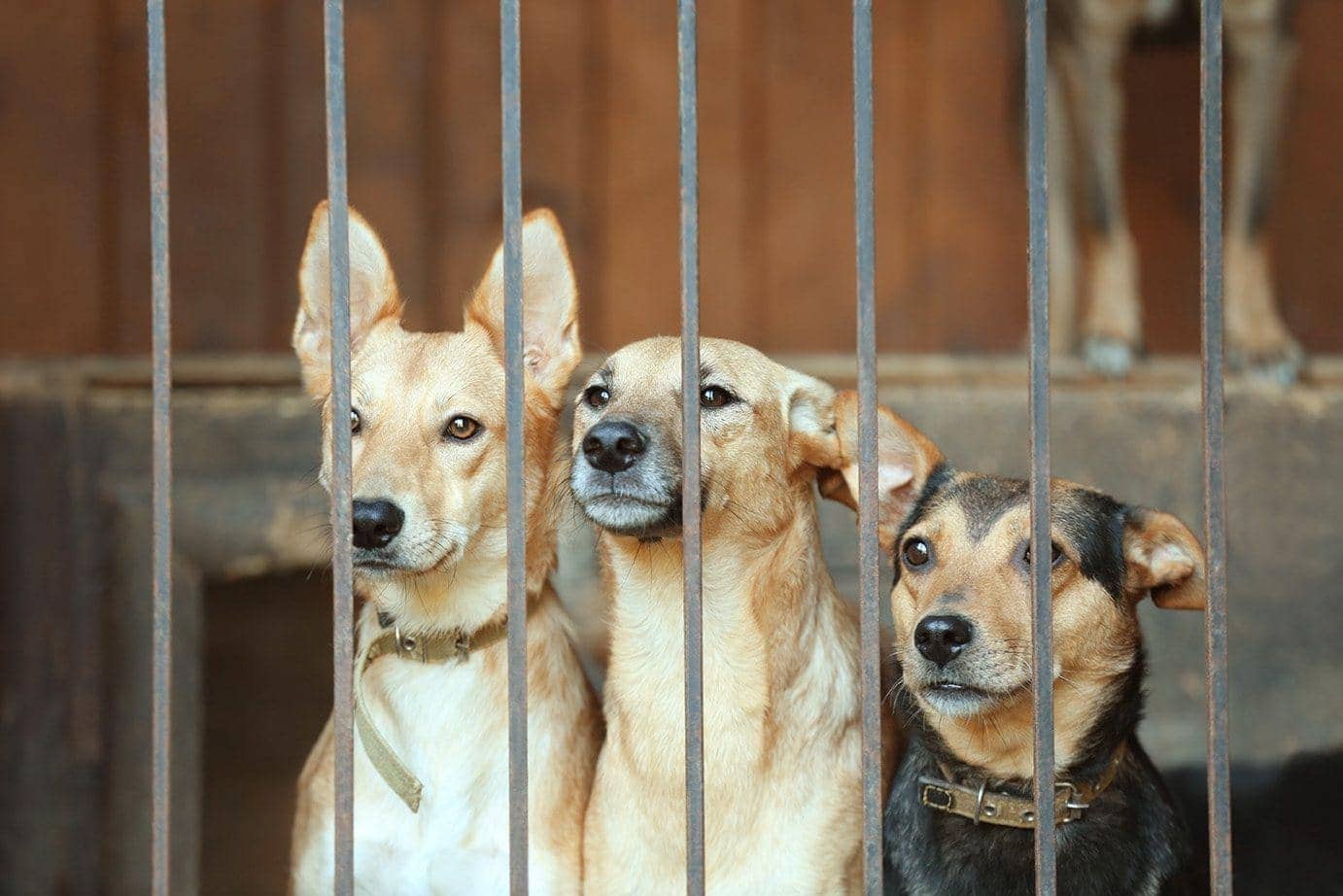
Many shelters have overcrowding problems with more animals needing to be taken in than are rehomed each day. While some shelters operate a no-kill policy, which means that they don’t euthanise any healthy animal, others operate different policies. It is estimated that 21 dogs a day are euthanised because there is no room to keep them in shelters.
12. There has been a 24% increase in animals left at shelters in 2022.
(The Guardian)
The huge increase in the number of pets bought and adopted during lockdown has caused an upsurge in animals sent to rescues and shelters. This has become a problem as people previously on furlough and unable to leave the house have returned to work. They have found themselves unable to give the time required to look after their new animals. Shelters have reported a 24% increase in the number of animals being left with them this year.
13. Restrictive rental agreements are the biggest obstacle to adopting pets.
(Wales Online)
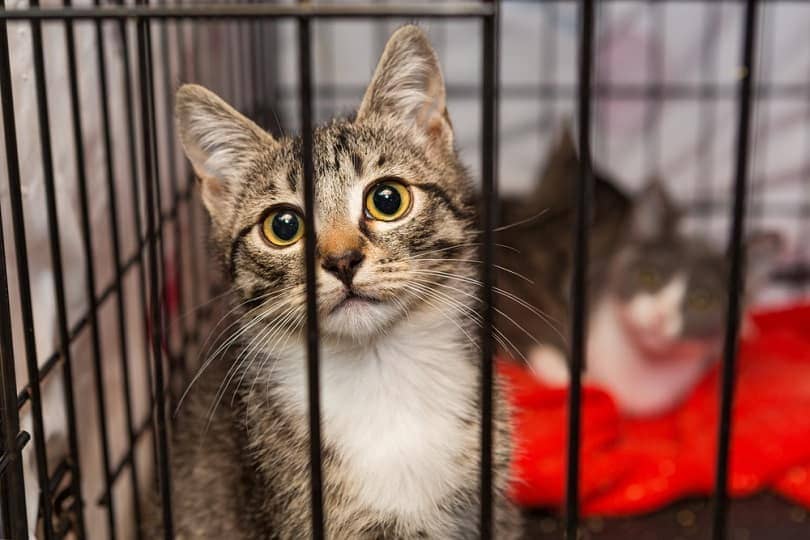
There are many reasons that people don’t want to adopt animals from shelters, but the single biggest reason according to one large survey is because of restrictive rental agreements. Although campaigners are trying to have the laws changed so that landlords cannot refuse pets by default, there are many tenants that have rental agreements with a strict no-pet policy. Some shelters also refuse to rehome to rental tenants, especially if they have limited outdoor space.
14. More than a third of people would not adopt a pet from a shelter.
(Wales Online)
When specifically looking at the reason potential owners will not use a shelter to adopt their dog, behvioural problems and uncertainty about the character and physical health of the adopted animals are some of the main reasons. More than 33% of people have said that they would not consider adopting from a shelter.
Causes and Responses
15. A single female puppy and her offspring can produce 67,000 puppies in 6 years.
(PETA)

If a female dog is left unspayed, she can have one or two litters of puppies a year, and the problem becomes self-perpetuating. Those stray puppies will not be spayed or neutered, and this means that they too go on to have litters. In 6 years, a single female puppy could be responsible for 67,000 puppies being born.
16. A single female cat and her offspring can produce 370,000 kittens in 7 years.
(PETA)
Some estimates put the number of feral, stray, and homeless cats in the UK at nearly 1 million cats. Part of the problem is that cats can have several litters a year, and stray and homeless cats are rarely spayed. Considering its direct offspring, and the offspring of its offspring, a single female cat can produce a staggering 370,000 kittens in just 7 years, which is roughly the length of time a female cat remains sexually active.
17. Nearly 50% more rabbits have been abandoned in 2022 than in 2021.
(The Guardian)
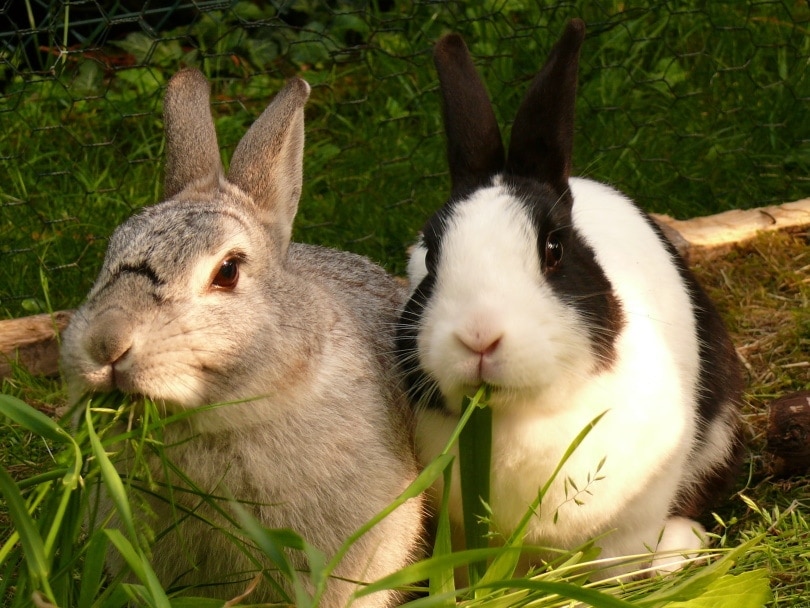
Dogs and cats are the most common pets in the UK, but there are estimated to be about a million pet rabbits. Although rabbits tend to do better when left alone, which suggests new owners should not have the same concerns of separation anxiety as new dog owners, rabbits are the type of pet that have fared worst following the Covid pandemic. The number of rabbits being abandoned is 50% higher in 2022 than it was in 2021.
18. 19% of pet owners are worried about the cost of feeding their pets.
(The Guardian)
As well as owners returning to work, another factor that has contributed to an increase in the number of pets being abandoned is the cost-of-living crisis. Food, energy, and fuel bills have all risen sharply over the past year or two and an increasing number of families are living in poverty, unable to feed their pets. When asked, 19% of pet owners said that they were worried they would not have the money to properly feed their pets.
Frequently Asked Questions About UK Animal Homelessness
How Many Animals Are Homeless in the UK?
Although it is impossible to get an exact figure of homeless animals, there are estimated to be 1.1 million stray and homeless dogs and cats. Approximately 100,000 of these animals are stray dogs, which means that approximately one million are stray, feral, and homeless cats.
What Happens to Stray Dogs?
About 100,000 stray dogs are handed to local councils every year. Initially, they are taken to their local pound if there is one, or they are put in private kennels. The dog is scanned for a microchip, and the owners are contacted if a chip is found. Otherwise, the dog is kept, usually for a period of 7 days, while the kennels wait for the dog’s owner to come forward.
If owners do not come forward, charities like the RSPCA and Blue Cross attempt to rehome the dog. However, some stray dogs are put to sleep because charities do not have the room to house them all. (Blue Cross)

Do Dogs Need to Be Microchipped?
It is a legal requirement that all dogs over the age of 8 weeks be microchipped. Microchipping is the most effective way to ensure that stray dogs are reunited with their owners quickly.
Do Cats Need to Be Microchipped?
Currently, there are no microchipping laws for cats, but the government is passing a similar law to the existing regulations for cat microchipping. When passed, the law will require that cats are microchipped by the time they are 20 weeks old.
How Much Does It Cost to Adopt a Pet?
Adoption fees vary according to several factors and different shelters have different adoption fees. Some older cats and dogs may be available for no or a nominal adoption fee because shelters struggle to find new homes for pets of this age.
Dog adoption usually costs around £200 to £250, and cat adoption fees between £100 and £200. However, puppies and kittens usually have higher adoption fees because they are more popular but also because they have cost the shelters more in veterinary and care fees.
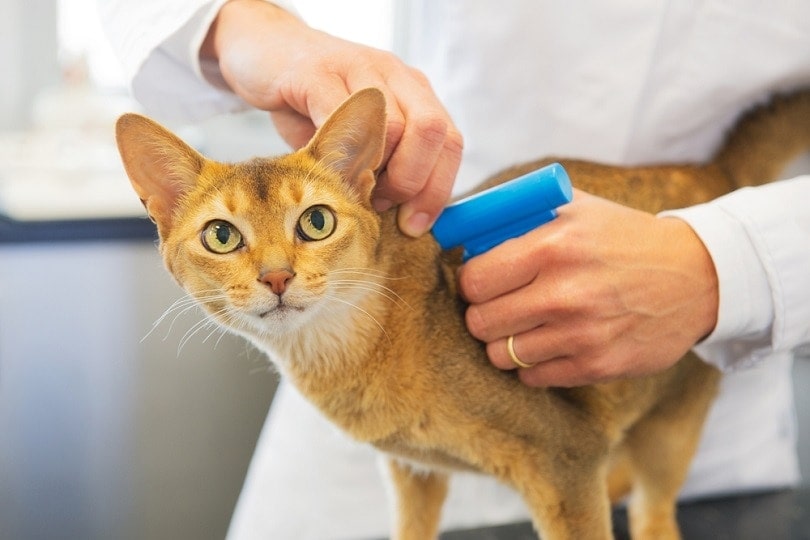
Conclusion
Animal homelessness is a big problem in the UK with more than a million cats and dogs believed to be stray or homeless. There are 1,000 or more shelters that exist in the UK, but they have limited space, which results in some otherwise healthy animals having to be put to sleep because they cannot find a home.





